- Benefits of holding poses
- Hold duration based on yoga style
- Factors that affect hold time
- Safety considerations
- Tips to improve hold time
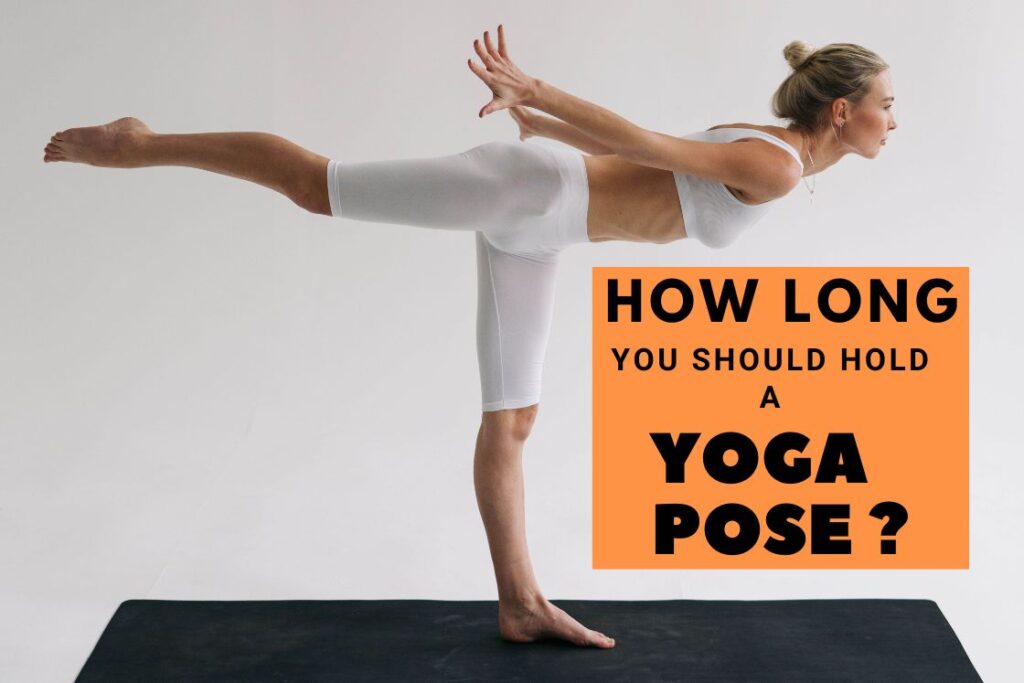
Holding each pose for a specific duration is crucial to reap the maximum benefits of yoga practice. However, the question remains, how long should one hold a yoga pose for the best results?
The answer to this question may vary from person to person, as the duration of holding a pose depends on various factors such as the level of experience, flexibility, physical conditions of the practitioner, and even the type of yoga you’re practising. In general, holding a yoga pose for 5-10 breaths is considered ideal for beginners, whereas more experienced practitioners can hold the pose for a longer duration.
Holding a yoga pose for an appropriate amount of time allows the practitioner to build strength, increase flexibility, improve balance, and release tension from the body. Moreover, it helps to create a meditative state of mind, leading to a sense of calm and inner peace.
In this article, you will get to know more about the hold time of yoga asanas and how you can determine the time to hold a particular pose on your own.
Benefits of holding yoga poses
Holding a yoga pose consciously for some time has numerous physical advantages besides merely stretching the muscles. A deeper physical, physiological, and psychosomatic alteration results from holding the yoga pose. By easing into the stretch, you are helping your muscle to progressively relax and accommodate to this increased range of motion, thereby raising its endurance.
In either a Hatha or a Restorative class, maintaining your poses will make you feel stronger and more stable.
Here are some benefits of holding the yoga poses:
Boosts muscle strength and flexibility
Your muscles cooperate to help you hold particular yoga postures while you remain in them. The muscles are slightly strained as a result, and when they heal, they grow stronger and more chiselled.
The ability to hold progressively demanding postures that call for more strength and active mobility requires the development of muscular activation, which is facilitated by long hold periods. As we go on our regular, daily lives, this promotes flexibility and keeps our joints within a healthy range of motion, preventing injuries.
Challenges muscle endurance
When trying to efficiently create lean muscle, long hold times impact your strength and stamina. Long-held positions encourage your muscles to gradually adapt, get stronger, and build endurance—all of which can be incredibly helpful when attempting more difficult yoga poses.
You’ll start having the ability to perform for longer periods without getting tired as you practice flow and learn to link your breath to movement.
If you’re feeling sore, you may still work out while ironing out small kinks to speed up healing because short hold times won’t tax your muscles’ endurance.
Gives enough time for alignment
As you hold a posture for a longer duration, you have sufficient time to create the pose from the ground up, resulting in a practice that is effortless. You have enough time to feel, adapt, and then readapt.
Both digging deeper and going for a bind are options. You can experiment with a stance, discovering new feelings and difficult variants, by holding it for the whole duration of the pose.
You start enjoying the pose and become eager to return to it the following time when you’re in anything for such a small period.
Taking some time to concentrate on your alignment is acceptable, but try not to let it consume all of your attention.
Enhances body awareness
Longer holds help you develop stronger body awareness while in the pose, which enhances your body awareness. More muscular activation results in prolonged posture holding because more muscle fibers are engaged.
Additionally, in shorter holds, you are actively engaging your breath with the movement which makes you aware of the muscle movement and the joints.
Allows release of emotions
Emotions might frequently surface when you hold a pose longer than is comfortable for you. It is beneficial to practice acceptance while maintaining your pose. It will help to develop the ability to maintain awareness of the breath and any arising emotions. The same guidelines—staying with the breath and noticing feelings without getting involved in them—can be used.
Recommended hold times based on yoga style
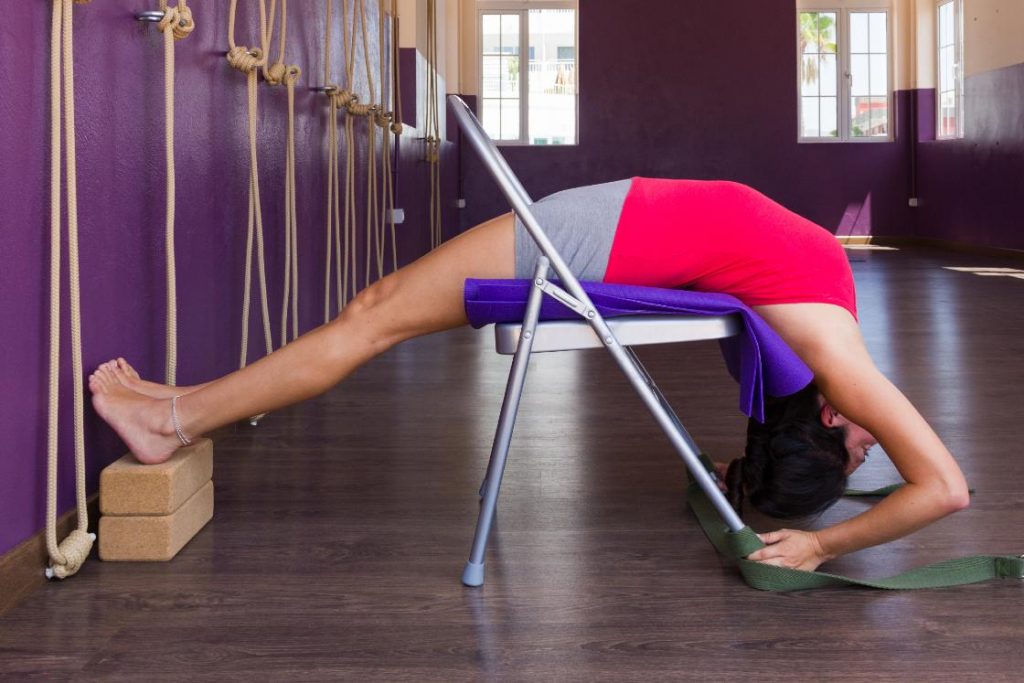
The hold times for yoga pose is typically counted in the breaths. You will hear your instructor asking you to stay in the pose for 3 breaths or 5 breaths. However, in general, one complete inhale and exhale in yoga typically lasts between 4-6 seconds.
1 breath is equivalent to 1 cycle of deep inhaling and exhaling. Basis this, the hold time can be classified as follows:
- Short Holds – 1-3 breaths or 30 seconds to 1-minute
- Medium Holds – 3-8 breaths or 1-2 minutes
- Long Holds – 8-10 breaths or 2 minutes or more
The below hold timings for yoga styles are only suggestions. You should listen to your body and adjust the hold time as per the pose and your convenience.
You may also like: 13 Popular styles of yoga
Yoga poses holding time in Hatha Yoga
You often go for medium hold time – 3-5 breaths or 1-2 minutes – in most of the hatha yoga poses.
In Hatha yoga, the duration of holding poses varies depending on the pose, the individual’s level of experience and physical condition, and the purpose of the pose. Here are some general guidelines for holding poses in Hatha yoga:
- Beginner Hatha yoga poses: Hold each pose for 10-30 seconds, gradually increasing the duration as the body becomes more flexible and comfortable in the pose. Yoga poses for example, Mountain pose (Tadasana), Child’s pose (Balasana), Downward facing dog (Adho Mukha Svanasana), Cobra pose (Bhujangasana), Triangle pose (Trikonasana) etc.
- Intermediate Hatha yoga poses: Hold each pose for 30-60 seconds, 1-2 repetitions. Yoga poses for example, Extended triangle pose (Utthita Trikonasana), Tree pose (Vrksasana), Half lord of the Fishes pose (Ardha Matsyendrasana), Boat pose (Navasana), etc.
- Advanced Hatha yoga poses: Hold each pose for 60-90 seconds, 1 repetition. Yoga poses for example, Camel pose (Ustrasana), Full wheel pose (Urdhva Dhanurasana), Shoulderstand (Sarvangasana), Plow pose (Halasana), King pigeon pose (Eka Pada Rajakapotasana), and Crane pose (Bakasana)
Yoga poses holding time in Ashtanga Yoga
The duration of holding poses in Ashtanga yoga is typically counted in a specific way that is different from other styles of yoga. This style of yoga is often referred to as “power yoga” and emphasizes strength, flexibility, and endurance.
Each Ashtanga yoga pose in a series must be perfected and mastered before moving on to the next pose. Thus, the hold time for this yoga style is typically medium hold – 3-5 breaths.
Generally, the practitioners of the Ashtanga series have already been performing hatha yoga for a long time and their body is ready for the challenging poses of this yoga style.
As the practitioner gains some perfection on the pose, they tend to reduce the hold time gradually.
Here are some general guidelines for holding poses in Ashtanga yoga:
- Sun Salutations (A, B, C): Hold each pose for 5 breaths (approximately 5-10 seconds each).
- Standing Series: Hold each pose for 5 breaths.
- Seated Series: Hold each pose for 5-10 breaths.
- Finishing Series: Hold each pose for 5-10 breaths.
Yoga poses holding time in Vinyasa Yoga
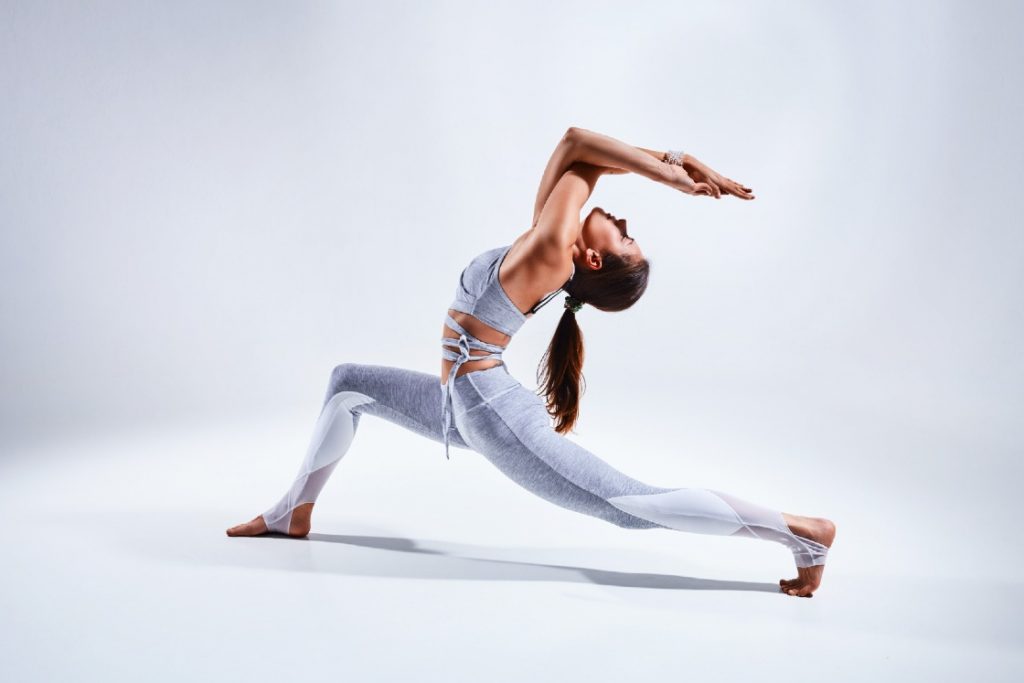
Vinyasa is comparatively fast-paced, hence, the hold time is short – generally 1 full deep breath or 3 to 5 seconds.
The key here synchronization of movement with breath.
When practising vinyasa yoga, a practitioner transitions between postures by using the rhythmic tempo of their breathing. One can sense how readily lifting, opening, and expansion are achieved by inhaling while lowering, twisting, and folding are obtained equally easily by exhaling.
Yoga poses holding time in Iyengar Yoga
Iyengar yoga also falls in the category of medium hold – 3-5 breaths or 1-2 minutes.
Iyengar yoga encourages the use of props for support in attaining alignment. Being detail-oriented means you need to spend some time in each pose to understand the nuances of the pose and how it affects your muscles, joints, and tissues.
The usage of props is fully optional and depends on the needs of the practitioner. They can also go for shorter hold durations if they feel confident with the pose.
Yoga poses holding time in Restorative and Yin Yoga
Restorative and Yin Yoga are among those yoga styles which require long hold duration, i.e, more than 5-8 breaths. The hold time can be as long as 10-15 minutes depending upon the need of the practitioner.
Here are some general guidelines for holding poses in Restorative and Yin yoga:
- Restorative Yoga: Each pose is typically held for 5-15 minutes or longer. The focus is on complete relaxation and allowing the body to release tension and stress.
- Yin Yoga: Each pose is typically held for 3-5 minutes or longer. The focus is on deep stretching and targeting the connective tissues in the body, such as ligaments and fascia.
Restorative yoga is practised to promote relaxation, calm, and healing from an illness or injury. It uses props such as cushions, blocks, bolsters, and blankets to promote ease of getting in and out of the pose. The practitioner is just sinking into the pose.
Yin yoga on the other hand focuses on stretching the connective tissues, making it an active holding yoga form. The stretch and sensations generated in the long holds of yin yoga are beneficial to experience the loosening and extension of the supportive connective tissues.
In yin yoga, the use of support is highly promoted so that you can easily get into the pose and attain the required stress on the tissues.
Yoga poses holding time in Hot and Power Yoga
These rigorous yoga forms need short hold duration, i.e, 1-3 breaths.
Hot and power yoga is generally performed to build fitness and endurance. Much emphasis is laid on speed rather than holding the pose.
In bikram yoga (a form of hot yoga), the room temperature is also kept a bit higher than normal to encourage sweat. This helps in weight loss which strengthens the muscles.
Both yoga forms also include aspects of vinyasa and have the capability of improving cardiovascular health.
Factors that can affect hold times
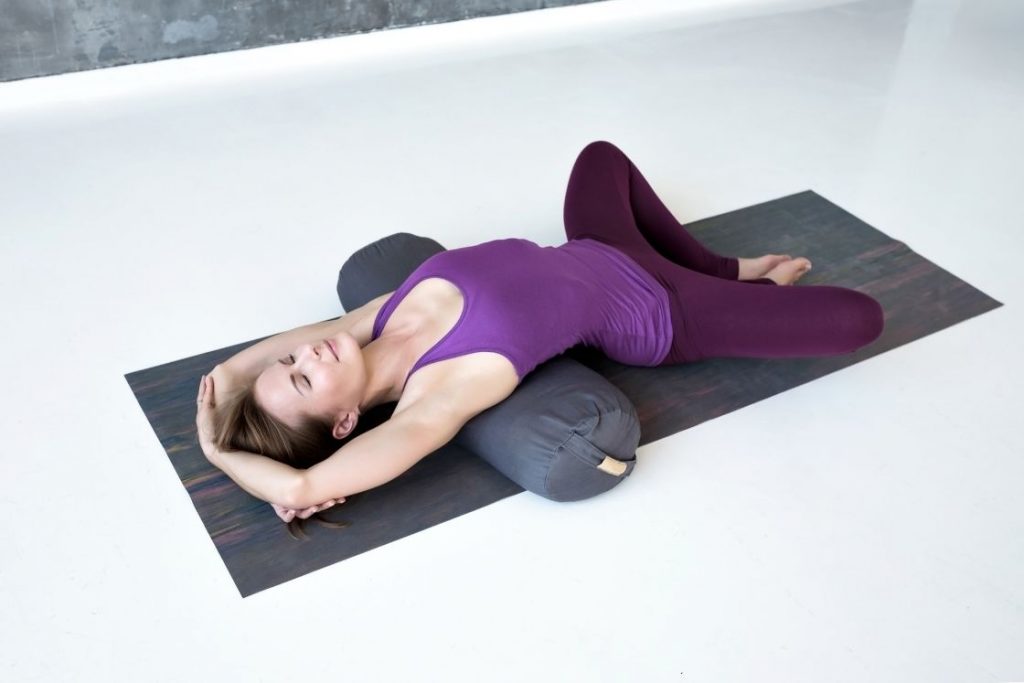
There are a handful of factors to take into account when deciding how long to hold a yoga pose, even though the decision is entirely up to the practitioner.
1. Your level of experience with yoga
If you have practised yoga for a long time, your muscles, joints, bones, and tissues are already used to the movements, flow, and range of motions of the poses. You can take the liberty of holding the poses for much longer durations or no holding at all (in case you’re vinyasa flow practitioner).
If you are just starting the yoga, you might want to start with a shorter hold time and gradually increase the time. Play around with the hold time in each pose. See how long you can hold the mountain pose when compared to the downward-facing dog pose.
It’s beneficial to gradually increase your body awareness and the manner you work with holding postures so that the transitions seem less forced or painful and more effortless.
2. Your health condition: if you have any injury or medical condition?
It is crucial to pay attention to your body and listen to it if you have an injury and are starting a new practice or returning to practice after an injury. Listening to your body (or your level of awareness) will prevent you from reinjuring yourself.
Based on the nature of the injury, holding poses for a longer period may be helpful to gradually and painlessly stretch the injured muscles.
Moreover, any previous or current medical conditions like asthma, sciatica, migraine, and arthritis, should also be taken into account when starting practice. Based on the severity of the issues, the hold time can drastically vary.
In any case, you should always first consult with your doctor before starting or resuming your practice.
3. Your goals and intentions to practice yoga
Are you trying to strengthen or stretch your muscles? Then, the poses don’t need to be held for long.
Are you striving to manage your anxiety? Do you need to unwind before getting ready for bed? You should prefer relaxing poses with longer hold time.
The length of time you hold a yoga pose will be greatly influenced by the goals you have set for yourself.
While yoga poses are commonly counted in breaths, holding a pose for five to ten breaths may be beneficial for balance and/or flexibility since it allows you sufficient time to settle into the pose.
Pose holding for extended periods will enable you to unwind before bed while shorter poses will give you more energy and be a great workout.
4. Style of yoga you are practising
The type of yoga you wish to practice—from Ashtanga to Vinyasa, Yin to Hatha, and every type of yoga in between—can influence how long you hold a pose.
Iyengar, Yin, Restorative, and Hatha yoga all place a stronger emphasis on posture and alignment than on the flow of the practice. They take each stance one at a time, occasionally holding it for several minutes concurrently. These types of yoga emphasize deepening the pose, engaging the muscles, and integrating with the breath.
Vinyasa, Ashtanga, and Power Yoga, on the other hand, promote flow and movement instead of holding poses for long periods.
5. The pose you are performing
To prevent exhaustion or overstretching, extra time should be allotted for poses that are longer and more challenging.
For instance, you may find it difficult to hold Chaturanga for as long as Downward Facing Dog because Chaturanga is a pose that necessitates a lot of strength and stability.
Similarly, the difficulty of maintaining the dolphin stance is significantly greater than that of the mountain pose.
No matter how physically fit you are, some poses are just impossible to hold for very long by design. Pay attention to how your body is responding as you are in various poses and adjust your movements as necessary.
6. Your body response to a pose
When it involves holding yoga positions, there is no one approach that works for everyone. The length of time you should hold a posture varies depending on several circumstances, but the key is to listen to your body and do what feels appropriate.
You should stay in a pose longer if it feels good to you and you want to. Take that additional breath if you can. Stop immediately if you feel that you cannot continue after 1 breath.
It’s very normal for your body to feel different during each session and day. You will get more flexible and stretched as you hold your pose for a longer period.
It’s about developing a practice that works best for you while paying attention to your body.
7. Your current physical and mental state
Consider how your body is feeling, paying attention to any aches or pains in your muscles, joints, or other body parts. Check if you are feeling anxious, stressed, or tired.
Every workout doesn’t have to be an intense, perspiration-filled struggle. It’s acceptable to hold poses for shorter periods if you’re feeling exhausted, uninspired, or even sluggish. You may only need three breaths in a pose to get out of the slump.
Even a quick routine with quick holds improves your body and mind more than merely lounging about.
Taking a step back and being kind to yourself is completely reasonable. It is already a significant accomplishment to get up and exercise.
But make a point to come to the mat regularly. Your mind and body will appreciate it even if you only hold a position for two minutes.
Safety considerations when holding a yoga pose
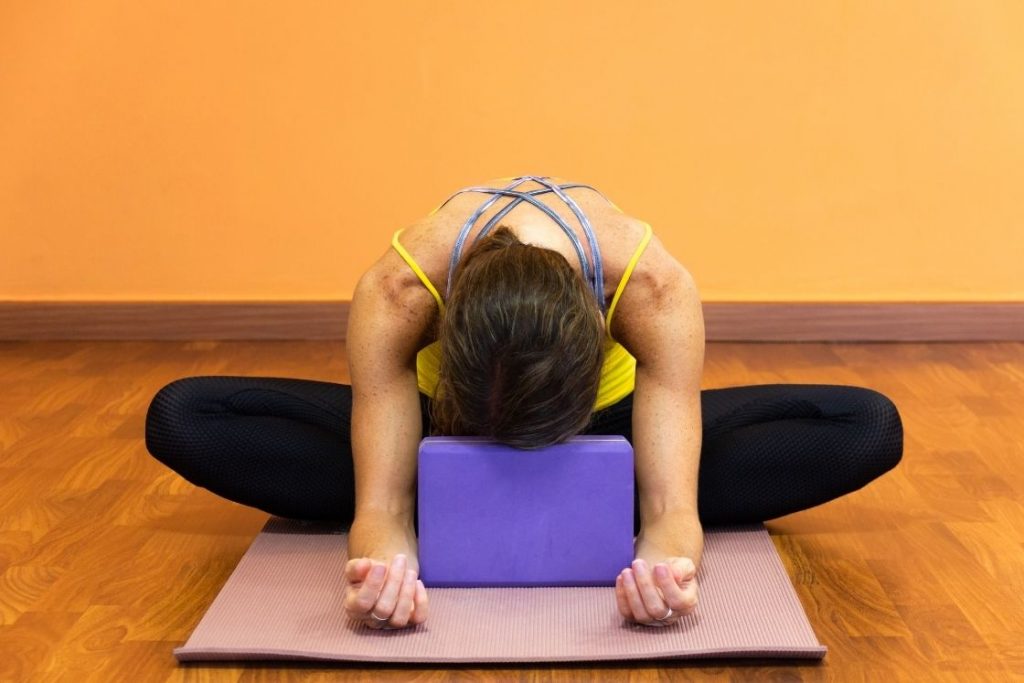
An important point to keep in mind is whatever hold time you prefer, make sure that you are not experiencing any pain or discomfort just for the sake of a longer hold. On the contrary, when following a shorter hold time, you should not overlook the alignment and formation of a pose or else you might pull a muscle or cause any injury.
This is why it is always advised to learn yoga from a teacher to understand the nuances of a pose. You can consider enrolling in FITSRI online yoga class to practice asanas with great detail and alignment.
You can always go for variations of the pose to make a pose easier to approach.
For example, when performing the tree pose, you can rest your bent leg on a chair or place the sole of the bent foot below the knee if you are unable to bring it further up.
When performing the downward-facing dog pose, you can rest your hands on blocks or on the back of a chair to lessen the forward bending.
These variations assure that you can hold the pose for a longer duration and gradually settle into the pose.
Tips for improving hold times
Yoga requires some preparation before you can begin practising it, as well as commitment. To improve your hold time, follow the below tips:
- For the body to be able to withstand the intensity of a long hold, it is important to stretch the body, extend the spine, and condition the various body joints.
- Focus on the breath is of utmost importance when holding the pose. When you focus on the breath you are cultivating internal awareness and mindfulness. You will get to know how your body reacts to a particular movement so you can accordingly adjust the pose.
- Many yoga styles encourage using props such as Hatha, Iyengar, Restorative, and Yin yoga. This is done to facilitate the practitioner in achieving the right alignment along with the right stretch to the muscles.
- Sometimes, a prop may also be used to encourage deep relaxation to recuperate and heal. On the other hand, props can aid in targeting specific areas of the body to enhance the lengthening and strengthening of the muscles.
- You will always notice that yoga recommends holding a pose for 1-3 breaths. This is because when you are new to a pose, the muscles have yet to get used to the alignment, formation, and stretch of the pose. 1-3 breaths is typically a standard time to let your body assimilate to the pose. As you practice the pose regularly, you can stay in the pose for a longer period and also try out different variations.
Conclusion
Depending on your objectives, constraints, and the type of yoga you’re doing, the length of time you should maintain a position will vary. Yoga poses can be held in different ways by different people, with one being able to hold them for a longer period of time than the other.
You’ll eventually be able to hold a pose for longer periods as you continue to practice yoga frequently.
All that counts is what feels appropriate for your body at any particular time when practicing yoga, which can be done in a variety of ways. The flexibility this provides can increase how much fun practicing can be!




